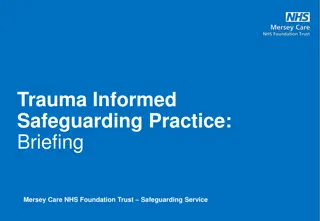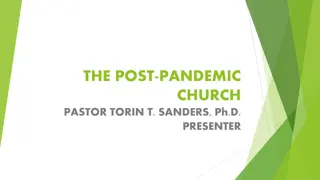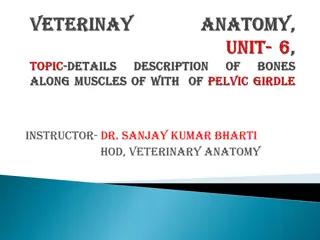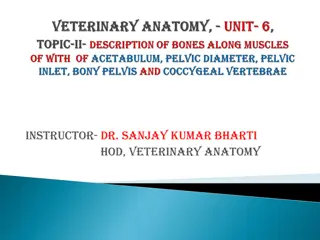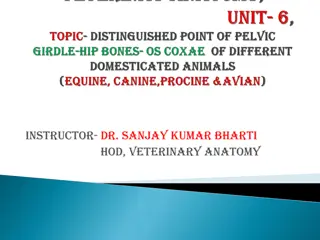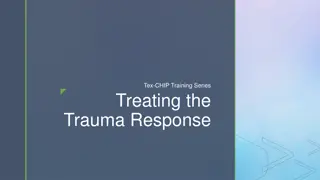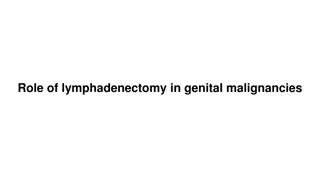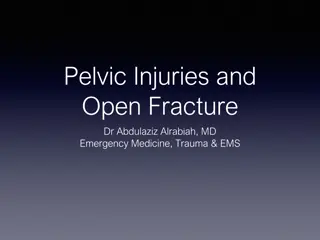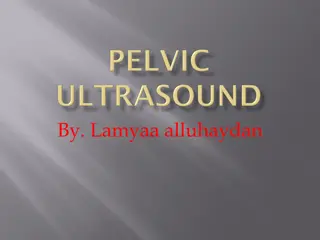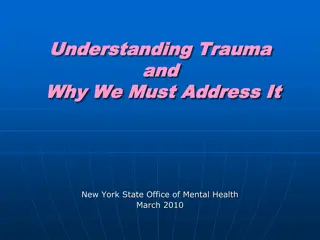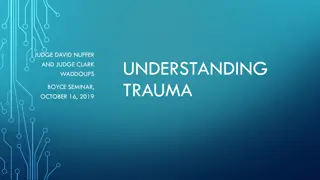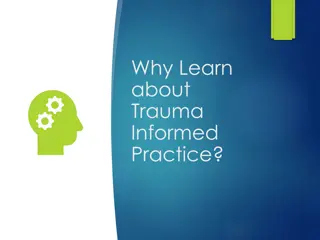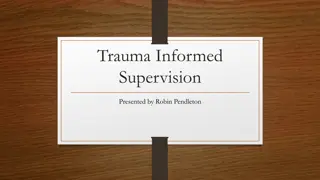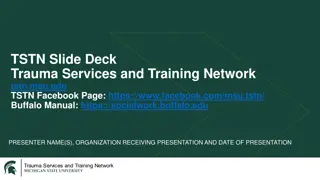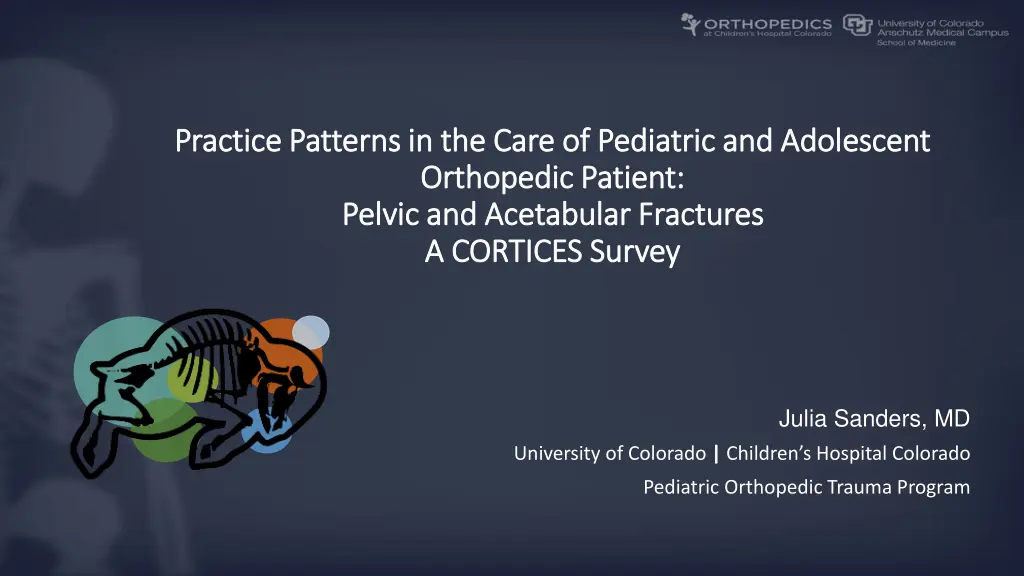
Pediatric Orthopedic Trauma Care Survey
Explore the ongoing survey on the care patterns for pediatric orthopedic trauma patients with pelvic and acetabular fractures. Understand the factors influencing treatment decisions and potential variations in care practices across institutions.
Download Presentation

Please find below an Image/Link to download the presentation.
The content on the website is provided AS IS for your information and personal use only. It may not be sold, licensed, or shared on other websites without obtaining consent from the author. If you encounter any issues during the download, it is possible that the publisher has removed the file from their server.
You are allowed to download the files provided on this website for personal or commercial use, subject to the condition that they are used lawfully. All files are the property of their respective owners.
The content on the website is provided AS IS for your information and personal use only. It may not be sold, licensed, or shared on other websites without obtaining consent from the author.
E N D
Presentation Transcript
Practice Patterns in the Care of Pediatric and Adolescent Practice Patterns in the Care of Pediatric and Adolescent Orthopedic Patient: Orthopedic Patient: Pelvic and Acetabular Fractures Pelvic and Acetabular Fractures A CORTICES Survey A CORTICES Survey Julia Sanders, MD University of Colorado | Children s Hospital Colorado Pediatric Orthopedic Trauma Program
Goal Given the potential consequences of fragmented pediatric trauma care and apparent variations in care for the pediatric trauma patient with pelvic and acetabular injuries, we have proposed a survey of CORTICES member sites regarding treatment of these injuries at their institutions. Through this, we hope to better elucidate the current treatment patterns and algorithms used by leaders in the field of pediatric orthopedics. This information will help guide future study in outcomes and best practices for pediatric pelvic and acetabular fractures.
Survey 27 members representing 17 institutions responded to the 1stelectronic survey Basic information collected about the provider s practice, volume of pelvic and acetabular trauma, and training of his/her partner surgeons 4 clinical scenarios were addressed. Problems identified were: different responses from surgeons at same institution, no data provided, responses that another surgeon would manage (thus no answer to specific questions) Based on feedback at the last meeting, we have been working on edits to the survey We previously asked for a single contact from each institution to fill out the survey, however many of you sent an adult trauma colleague s contact information. To do: please send the name of the Trauma Liaison at your institution. Once we have finalized the survey, we will send it out to the appropriate contacts.
Current Working Survey 1. 2. 3. Name of respondent Name of institution What is your primary institution s trauma designation? a. Level 1 Pediatric Trauma Center b. Level 2 Pediatric Trauma Center c. Mixed Trauma Center (ie Level 1 Adult, Level 2 Pediatric) d. Other What fellowship training have you completed? (select all that apply) a. Pediatric Orthopedics b. Orthopedic Trauma c. Other How many years have you been practicing (post-fellowship)? a. <5 b. 5-10 c. >10 Choose the selection that best describes your pediatric orthopedic institution a. Free standing Children s Hospital b. Integrated Children s Hospital (dedicated pediatric wing/area within an adult hospital) c. Other 4. 5. 6.
Current Working Survey What are the factors that impact whether you manage a pediatric patient with a pelvic ring injury? (Select all that apply) 1.Age 2.Skeletal maturity 3.Associated injuries 4.Fracture displacement 5.Fracture characteristics 6.Definitive operative vs non-operative management 7.Hospital policy or transfer agreement 8.Other (free text) What are the factors that impact whether you manage a pediatric patient with an acetabular injury? (Select all that apply) 1.Age 2.Skeletal maturity 3.Associated injuries 4.Fracture displacement 5.Fracture characteristics 6.Definitive operative vs non-operative management 7.Hospital policy or transfer agreement 8.Other (free text)
Current Working Survey Approximately how many pelvic ring injuries are treated at your institution annually? 1.<10 2.10-25 3.25-50 4.>50 Approximately how many of these are treated operatively? 1.<10 2.>10 Approximately how many acetabular fractures are treated at your institution annually? 1.<10 2.10-25 3.25-50 4.>50 Approximately how many of these are treated operatively? 1.<10 2.>10 Please provide a copy of your hospital s transfer agreement or other policy regarding treatment of pediatric pelvic and acetabular injuries.
Current Working Survey 1. He has a right sided SI fracture-dislocation and significant left sided internal rotation plastic deformity. Describe your management of this patient. a. Non-operative management. b. Operative management with the patient staying at a single institution. i. I would be the operative surgeon. ii. Another surgeon would be the operative surgeon. c. Operative management with the patient being transferred to a different institution. i. I would be the operative surgeon. 1. The patient would be transferred back post-operatively. 2. The patient would remain at the hospital they were transferred to post-operatively. ii. Another surgeon would be the operative surgeon. 1. The patient would be transferred back post-operatively. 2. The patient would remain at the hospital they were transferred to post-operatively. A 7 yo M presents after being struck by a car in a crosswalk to your pediatric hospital. *For the following scenarios, a transfer implies moving the patient to a different hospital (ie an ambulance or air transport) not a transfer to a different wing within the same hospital building.
Practice Demographics Peds Fellowship Trained Surgeons in Group 4/17 (24%), have a trauma fellowship-trained partner within their pediatric orthopedic group Only 5/17 (29%) report having a formal, established protocol directing care in the event of a pediatric or adolescent pelvic / acetabular trauma patient <10 Between 10 and 20 >20
Pelvic/Acetabular Volume Pelvic Ring: 9/26 (35%) reported <10 per year at their institution, 4/26 (15%) reported between 10 and 20 per year, 11/26 (42%) reported greater than 20 per year, and 2/26 (8%) reported 50 injuries per year Only 5/26 (19%) respondents reported more than 10 operatively treated pelvic ring injuries per year Acetabulum: 16/26 (62%) report less than 10 of these injuries treated at their institution per year, 9/26 (35%) report between 10-19 treated per year, and 1/26 (4%) report greater than 20 per year 23/26 (88%) treated less than 10 of these injuries operatively per year
Clinical Scenario: 7 yo Pelvic Ring 20/27 (74%) reported the child would remain at the children s hospital, while 6/27 (22%) would have the patient transferred to an adult trauma hospital Of those who transferred, 3/6 (50%) reported the patient would then be transferred back to the pediatric trauma hospital after completion of surgical procedures When staying at the children s hospital only 8/27 (30%) would be treated definitively by a pediatric fellowship-trained surgeon. 2/27 (7%) would be temporarily stabilized by a pediatric fellowship-trained surgeon and then definitive fixation would be performed by a trauma fellowship-trained surgeon at a later date
Clinical Scenario: 7 yo Acetabular Fracture 20/27 (74%) reported the patient would remain at the children s hospital, while 6/27 (22%) would have the patient transferred to an adult trauma hospital Of those who transferred to an adult trauma hospital for their surgical care, 3/6 (50%) reported the patient would then be transferred back to the pediatric trauma hospital post-operatively 8/27 (30%) of respondents indicated the patient would be treated by a pediatric fellowship-trained surgeon, while 1/27 (4%) would temporarily stabilize the patient first before transferring care to an adult trauma fellowship-trained colleague
Clinical Scenario: 16 yo Pelvic Ring 16/27 (59%) indicated the patient would remain at the children s hospital. 10/27 (37%) stated the patient would be transferred to an adult trauma hospital for surgical care Of those transferred to the adult trauma hospital for surgical care, 6/10 (60%) would remain for post-operative care 6/27 (22%) reported this injury pattern in a 16-year-old would be treated by a pediatric fellowship-trained surgeon 17/27 (63%) stated the patient would be initially and definitively treated by an adult trauma fellowship-trained colleague upon presentation
16 yo Acetabular Fracture 16/27 (59%) reported the patient would remain at the children s hospital Of those transferred, 7/10 (70%) would remain in the adult hospital for post- operative care 7/27 (26%) indicated the injury would be managed by a pediatric fellowship- trained surgeon 17/27 (63%) indicated the patient would be primarily managed by an adult trauma fellowship-trained surgeon
Care of Unstable Pelvic and Acetabular Trauma 13/27 (48%) indicated that they do not personally care for these injuries. Why: 12/13 (92%) indicated it was because a trauma fellowship-trained surgeon was available to manage these injuries 1(4%) indicated it was due to less familiarity with the surgical approaches necessary for those cases 13/27 (48%) indicated there was one or multiple specific partners within their group who were designated to care for these injuries 2/27 (7%) stated affiliated trauma fellowship-trained surgeons were readily available and therefore managed these cases. 1 (4%) indicated that patients were transferred out and managed by an adult trauma fellowship-trained surgeon in all instances solely for consistency in care
Key Points These injuries are rare, even at tertiary care institutions Very few pediatric orthopedic surgeons manage these injuries These patients are often being transferred to adult hospitals for operative management and back for postop care The minority of institutions have a protocol defining transfer parameters
Questions to discuss 4/17 (24%), have a trauma fellowship-trained partner within their pediatric orthopedic group - does this mean within the greater group or dual fellowship trained partners? 1 person reported decision to transfer to adult hospital based on severity of injury what would be the characteristics that would initiate a transfer? What can CORTICES offer as a group? Information (survey results, POSNA survey?) Guidance (suggested protocol?) Is this worthwhile publishing?




